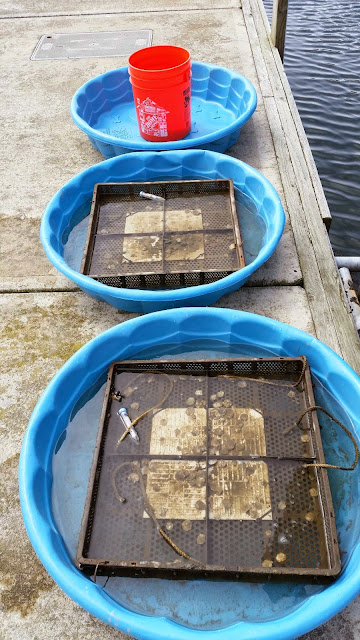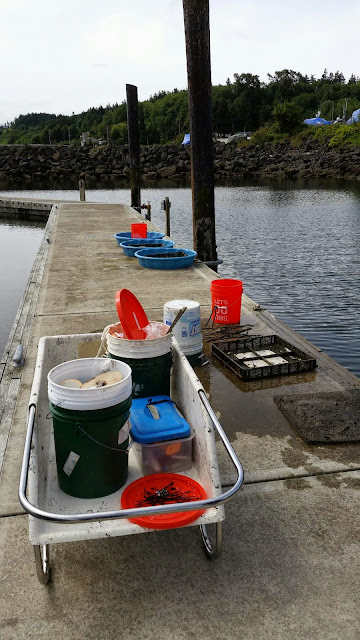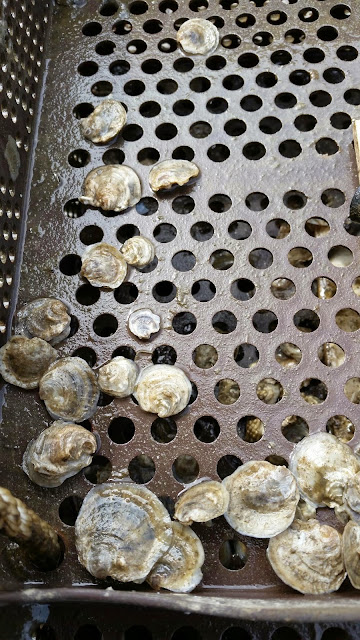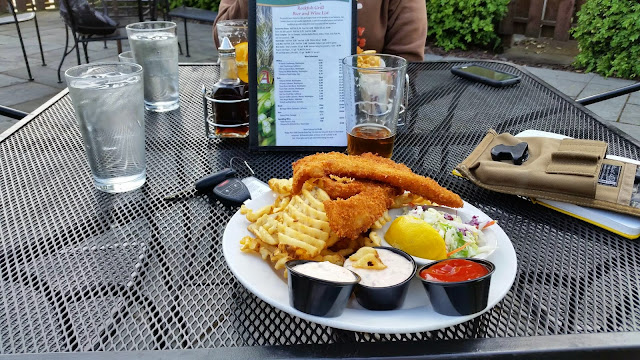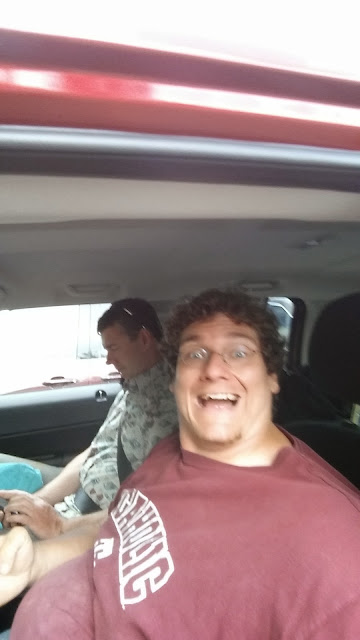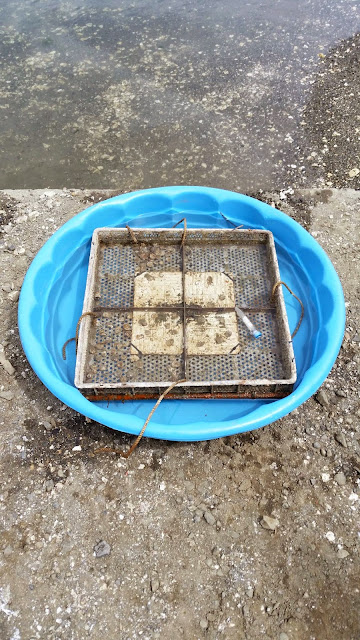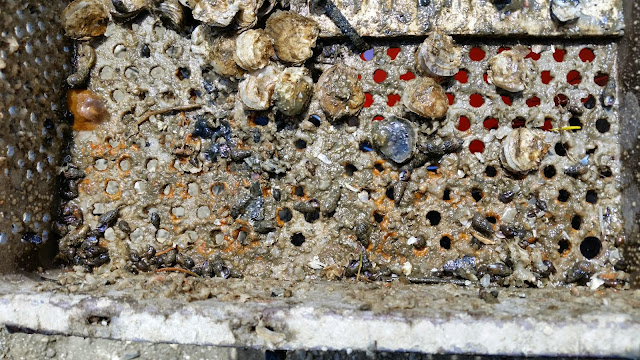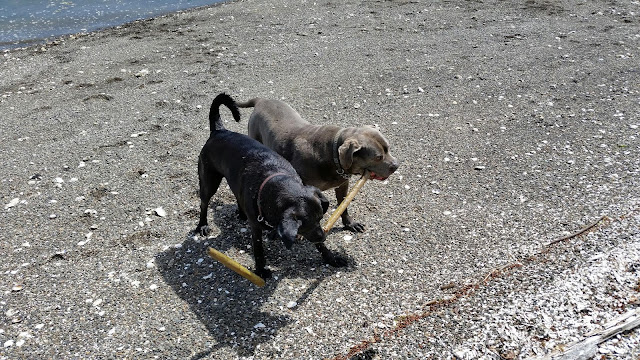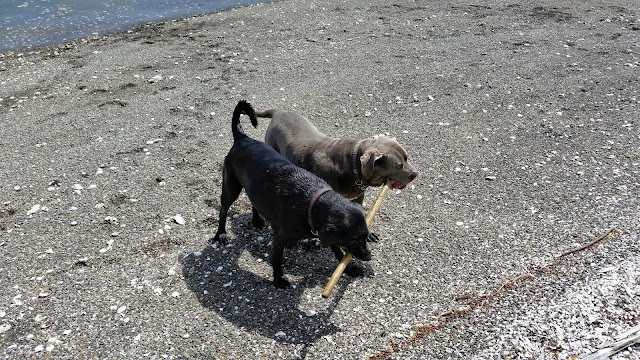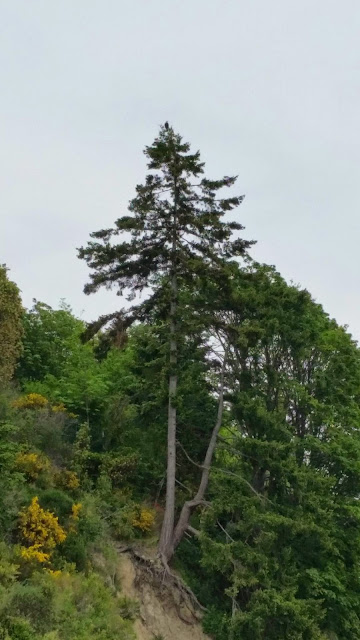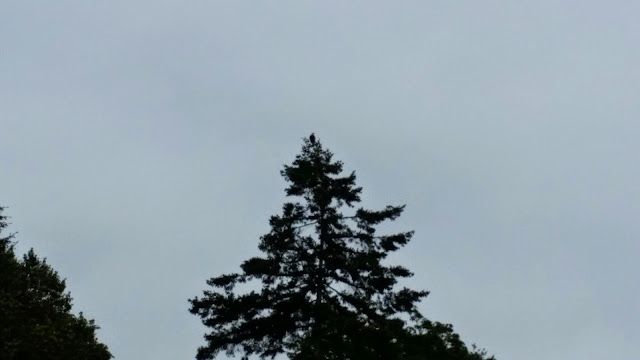Tuesday, May 27, 2014
Reproduction Survey Spring 2014 Standard Operating Procedures
1 stack consisting of 1 tray from each population is pulled out of the water where they are held for anesthesia. The stack will be different each week until all 4 stacks have been checked and then the process will repeat starting with the stack that was checked first.
Two of the trays are placed individual in roughly 10 gallons of ambient sea water in 2 twenty gallon pools.
The third tray remains outside side of the pool for approximately 45 minutes to deprive the oysters of oxygen.
Once the 45 minute mark is reached the tray is then placed in 10 gallons of a 50/50 seawater/85 g/L epsom salt freshwater mixture. These animals are then allowed 45 minutes to open up inside the treatment. Once open the animals are anesthetized by the epsom salts and remain gaping until flushed with sea water.
While the first tray is being treated the second tray is being dessicated. This repeats with the second tray treatment and the third tray dessication.
The animals are then visually inspected for signs of larvae including a grayish mass in the gills or on the lower deep cup of the shell. If anything suspect is seen, these animal is then flushed with seawater into a 52 um screen to capture any possible larvae. If larvae are present, they are washed off the screen into a 50 ml falcon with 75% Ethanol solution for preservation.
After all gaping animals are inspected, a quick count of all dead, gaping, and brooding animals is performed. Then the tray is placed in a pool of fresh ambient sea water to help the animals recover and avoid dessication until the process is completed for all trays being observed.
Once the final tray has been surveyed. The trays are then randomly organized back into a stack, secured to the hanging rope, and then returned back to their holding area.
Any brood collected will be brought back to the lab and have their solution switched out with 95% Ethanol.
Saturday, May 24, 2014
5 24 2014 fidalgo repro
Light rain
2H9-12
Brood. 0
Gaping. 24
Dead 0
Brood. 0
Gaping 53
Dead 0
Brood. 0
Gaping. 77
Dead. 0
Friday, May 23, 2014
5 23 2014 oyster bay emergency sampling
Oyster bay, WA
Mid 60s 70s
Participants Steven Roberts, Brent vadopalas, and Jake heare
We came back to oyster bay today to check if mortality occurred across the board.
Upon inspection of the three remaining stacks. There was no indication that the mortality event was spread to the other trays. It seems that a mix of extended exposure, high temperatures, and the treatment caused a mass mortality event. Dabob was the first group to be treated and thus did not experience the same duration of high heat and low oxygen that the north and south sound trays did. We decided to same from the affected trays anyway. We collected 8 from the north sound tray, 4 from the south sound tray, and 10 from the dabob tray. We also individually bagged the shells from the dead oyster in hopes of using them for future data efforts.
On a side note, there appeared to be 2 dabob oysters that had recently spawned as evidenced by the post gonadal canals. Since they showed no signs of brooding it is assumed they spawned as male and may spawn again in the near future as female.
We also did a semi brood check on the other full set of trays and found no brooders.
Shells were placed on dry ice, tissue samples stored in rna later. Will be transferred to cold storage in the near future.
Will continue repro check at fidalgo tomorrow.
Enjoy this selfie of Brent and I in the car as I write reports.
Thursday, May 22, 2014
5 22 2014 oyster bay repro
Oyster bay, WA
High mid 70s.
Participants Katie Jackson and Jake heare.
Tested for reproductive active today. Very bad news.
There has been a huge mortality event at oyster bay. Numbers for brooding, gaping, dead, and alive but not open are as follows.
1n13-16
Brood. 0
Gaping. 3
Dead 93
Alive 5
1s5-8
Brood 0
Gaping 2
Dead 68
Alive 4
1h5-8
Brood 0
Gaping 47
Dead 51
Alive. 9
Clearly dabob has survived whatever mortality event much better than north and south sounds populations. We will be sampling this site tomorrow to ensure fresh samples.
Wednesday, May 21, 2014
5 21 2014 Manchester repro
Did a brood check today at manchester. Found no brooders.
Numbers as follows.
4S5-8
Brood. 0
Gaping. 76
Dead. 3
4H13-16
Brood. 0
Gaping. 16
Dead. 2
4N13-16
Brood. 0
Gaping. 40
Dead. 3
Enjoy this picture of an eagle.
Tuesday, May 20, 2014
Capsized boat at Fidalgo Marina
Monday, May 19, 2014
5-14 to 15-16 2014 Reproduction Work Up
% Open 25.8%
% Open 43.9%
% Open 59.8%
% Open 76.7%
% Open 69.4%
% Open 53.5%
% Open 58.5%



